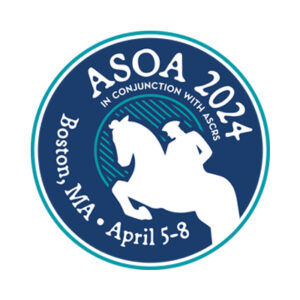Residents: Cataract tips from the teachers
March 2012

Sherleen Chen, M.D.
Assistant professor of ophthalmology
Harvard Medical School
Director of Cataract and Comprehensive Ophthalmology
Massachusetts Eye and Ear Infirmary

Roberto Pineda, M.D.
Assistant professor of ophthalmology
Harvard Medical School
Director of Refractive Surgery
Massachusetts Eye and Ear Infirmary
The microsurgical confines of anterior segment surgery require precision, steadiness, and a deft touch. A hand tremor can be a frustrating interference to carrying out the fine maneuvers required for cataract surgery. Most surgeons have at some point dealt with and overcome the nervousness and inexperience that contribute to hand tremors. Here, we learn from three experienced cataract teachers about their best advice to help surgeons in training manage a tremor.
—Sherleen Chen, M.D., and Roberto Pineda, M.D.
Carol L. Karp, M.D.
Professor of clinical ophthalmology
Bascom Palmer Eye Institute
University of Miami Miller School of Medicine

I think of a tremor as something that has both emotional and physical components. In managing this issue, the key is preparation for the emotional and physical aspects of the upcoming case.
Surgery can be stressful. Feeling insecure about the procedure can induce anxiety and bring out a tremor. For me, the best way to manage anxiety about a case is preparation. Be sure that the things you need for the case are available—the patient chart, the intraocular lens calculation, etc. A last-minute frenzy looking for these items can cause stress. I highly recommend watching videos of the procedure well in advance of the surgery. Watch them several times. This is what I do before any new procedure, and if possible, watch someone else do a case. I also write down every surgical step and then put this into my phone. I can quickly look over the list and any pearls at a glance. Seeing the procedure several times can significantly relieve anxiety.
The other component of a tremor is the physical component. I think about this in trying to control the micro- and macro-environment. By macro-environment, I mean your body and what you do before you get to the operating room. Always have a good breakfast, be well rested, and avoid caffeine and excessive exercise. These factors will allow you to be at your best.
Preparation for the micro-environment is also critical. This means that you must take the time to be sure that your hands and body are comfortable to avoid a tremor. Be sure that the ergonomics of your chair, microscope, foot pedal, and back position will keep you comfortable. Pay special attention to the wrist rest to support your hands. This is very helpful. I often will have my pinky touching the patient’s head to support my hand. These steps will avoid the onset of a tremor.
In some cases, these steps are not enough to quiet a tremor. Some surgeons use propranolol 40 mg prior to a case to control their anxiety and tremor. I have not tried this. If you do, be sure to test the propranolol on a different day, to ensure that you do not have any adverse reaction.
In summary, the key in managing a tremor is preparation. This means emotionally, to be ready for the case by reviewing all steps and data, and making sure that physically you are most comfortable.
Shahzad I. Mian, M.D.
Associate professor of ophthalmology and visual sciences
University of Michigan Kellogg Eye Center, Ann Arbor

Having a tremor during microsurgery is not uncommon for beginning surgeons and can have a major impact on surgical technique and outcomes. The vast majority of residents entering ophthalmology training programs have little or no experience in performing microsurgery but graduate from medical school with high scholastic credentials and a strong drive to succeed. Intraoperative tremors are a function of lack of experience, anxiety associated with surgical performance, and a busy schedule during training.
Having a tremor under the microscope is most commonly a function of limited experience using instruments under high magnification in small spaces. For most residents, this type of tremor improves with practice and experience. Spending time in the wet lab to become familiar with use of the microscope, surgical instruments, and high magnification intraocular movements repetitively, especially with supervision from more experienced surgeons, can have a significant impact. Specific tasks in the wet lab include focus on knowledge of basic surgical instruments, tissue manipulation, and suturing. Skill development with these tasks leads to practice with more advanced steps such as capsulorhexis and phacoemulsification. More recent advancements in surgical simulators, including the Eyesi (VRmagic, Mannheim, Germany), provide specific modules for anti-tremor training. This may perhaps provide the best quantitative feedback regarding skills needed to eliminate intraoperative tremors. Additional studies are needed to show benefits of anti-tremor training with simulators in the operating room.
Novice surgeons also have much anxiety over skills necessary to perform surgery at the level of experienced surgeons and providing patients optimal outcomes. Intraoperative maneuvers to address tremors include better stabilization of fingers and instruments. For most novice surgeons, using both hands to stabilize instruments in the eye, a superior approach with hand support on the forehead or using a wrist rest can be beneficial. Adjusting the microscope, chair, and foot pedals to improve comfort also help reduce anxiety and tremors.
Tremors not improved with practice may benefit from use of 10-40 mg propranolol hydrochloride 1 hour prior to surgery.1,2 In addition, developing a pre-op routine with appropriate amount of sleep and avoiding caffeine can help as well.2 Counseling should also be considered for trainees having a difficult time coping with the stress associated with residency.
The vast majority of residents complete training with excellent surgical skills and can eliminate or compensate for tremors during surgery with practice in the wet lab and virtual simulators, anti-anxiety remedies that may include pharmacotherapy, and attention to lifestyle choices prior to surgery.
Eydie G. Miller, M.D.
Professor of clinical ophthalmology
Director of Glaucoma Service
Scheie Eye Institute, University of Pennsylvania Health System, Philadelphia

A hand tremor can be a problem when performing delicate intraocular surgery. Performance anxiety is more common in a fledgling surgeon. Both the excitement of doing a case and the fear of making a mistake can cause an adrenaline surge that results in a hand tremor and tachycardia. That might not be problematic if you’re amputating a limb, but it is with microsurgery. However, adrenaline is part of the body’s normal response to dealing with an important or stressful situation. It focuses the mind and improves our attention to detail. Attention to the following pre-op and intraoperative factors can help prevent or lessen a hand tremor.
Pre-op: 1) Be prepared. Use surgical videos to review the steps of the operation, then practice them in the surgery lab. The more accustomed you are to working under a microscope, handling the instruments, and suturing, the less anxious you will be during the case. 2) Avoid caffeine the morning of surgery. 3) Avoid strenuous exercise such as weight lifting on the day of surgery, which can stress the hands and cause an exercise-induced tremor. 4) Get a good night’s sleep. 5) If all else fails, consider a beta blocker. Propranolol 10 mg can help the hand tremor and tachycardia that accompanies surgical anxiety. A drop of sublingual timolol ophthalmic solution can also work. But don’t try it the first time on the morning of your case. Test it a few days in advance to make sure that you can tolerate the medication.
Intraoperative: 1) Surgeon comfort is key. Correct body and hand position is critical in controlling a tremor. 2) Before the patient is prepped the resident should position the patient and microscope and make sure the foot pedals of the microscope and phaco machine are in a good position. 3) Wrist fatigue can cause a tremor. During the case the surgeon’s wrist should be supported either on the patient’s cheek or brow or on a wrist rest affixed to the stretcher. 4) Holding the instruments too tightly causes muscle cramps, finger fatigue, and a tremor. Taking a break for a few relaxing breaths and finger stretches help. Holding instruments too close to the tip decreases the range of motion and fluidity of movement with the fingers, again leading to wrist and finger fatigue. 5) Sometimes I just hold a resident’s hand to calm the tremor and guide the instrument through a difficult step. Once I feel the resident relax and take over the maneuver I let go—surgical training wheels.
References
- Elman MJ, Sugar J, Fiscella R, Deutsch TA, Noth J, Nyberg M, Packo K, Anderson RJ. The effect of propranolol versus placebo on resident surgical performance. Trans Am Ophthalmol Soc. 1998;96:283-91; discussion 291-4.
- Humayun MU, Rader RS, Pieramici DJ, Awh CC, de Juan E Jr. Quantitative measurement of the effects of caffeine and propranolol on surgeon hand tremor. Arch Ophthalmol.1997 Mar;115(3):371-4.
Editors’ note
The doctors mentioned have no financial interests related to this article.
Contact information
Karp: ckarp@med.miami.edu
Mian: smian@med.umich.edu
Miller: eydie.miller-ellis@uphs.upenn.edu



